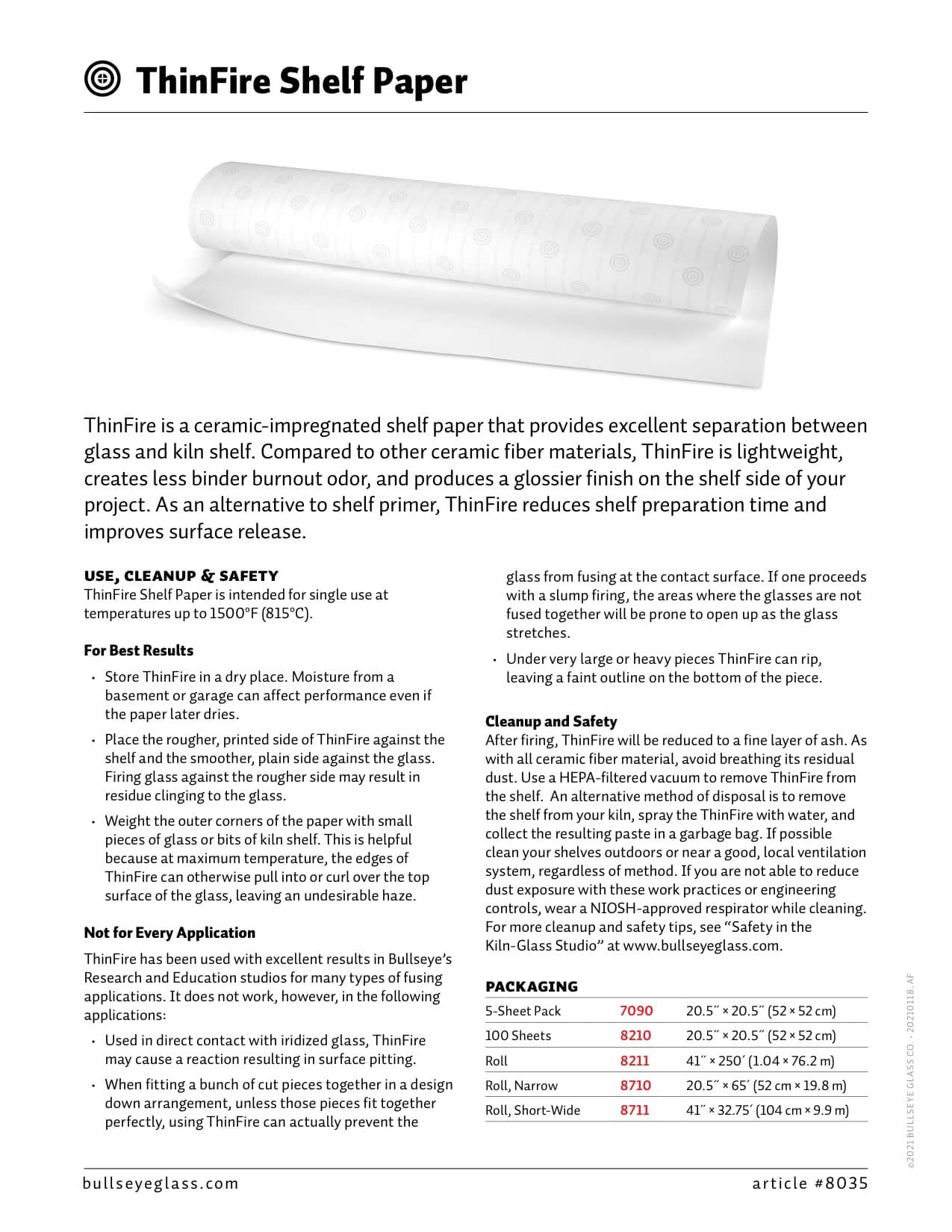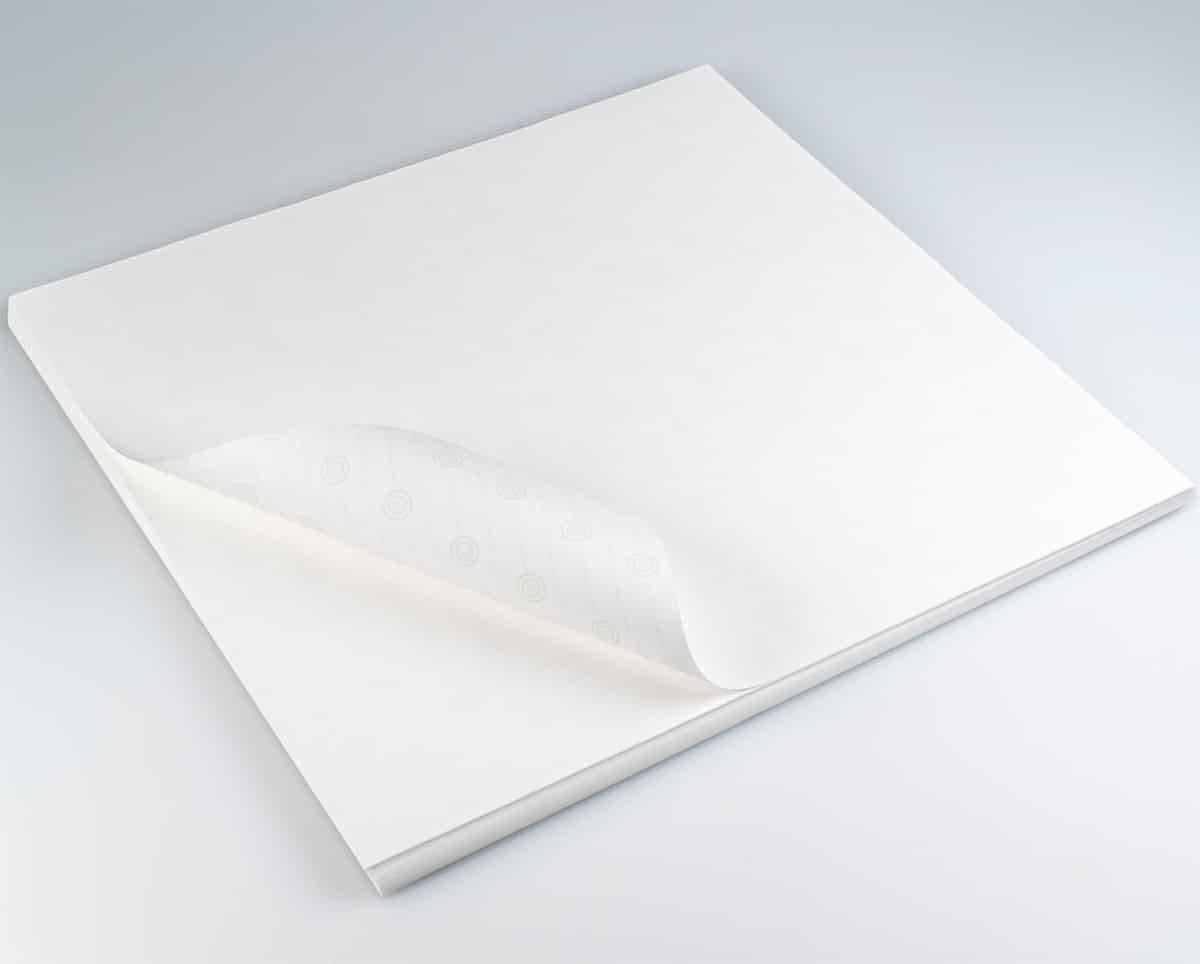ThinFire is a ceramic-impregnated shelf paper that provides excellent separation between glass and kiln shelf.
Compared to other ceramic fiber materials, ThinFire is lightweight, creates less binder burnout odor, and produces a glossier finish on the shelf side of your project. As an alternative to shelf primer, ThinFire reduces shelf preparation time and improves surface release.
Use, Cleanup & Safety
ThinFire Shelf Paper is intended for single use at
temperatures up to 1500ºF (815ºC).
For Best Results
- Store ThinFire in a dry place. Moisture from a basement or garage can affect performance even if the paper later dries.
- Place the rougher, printed side of ThinFire against the shelf and the smoother, plain side against the glass. Firing glass against the rougher side may result in residue clinging to the glass.
- Weight the outer corners of the paper with small pieces of glass or bits of kiln shelf. This is helpful because at maximum temperature, the edges of ThinFire can otherwise pull into or curl over the top surface of the glass, leaving an undesirable haze.
Not For Every Application
ThinFire has been used with excellent results in Bullseye’s Research and Education studios for many types of fusing applications. It does not work, however, in the following applications:
- Avoid using in projects that entail significant movement and/or pressure. (Examples include: Under Pressure or flow techniques, use of sliders, etc.)
- Used in direct contact with iridized glass, ThinFire may cause a reaction resulting in surface pitting.
- When fitting a bunch of cut pieces together in a design down arrangement, unless those pieces fit together perfectly. Using ThinFire can actually prevent the glass from fusing at the contact surface. If one proceeds with
a slump firing, the areas where the glasses are not fused together will be prone to open up as the glass stretches. - ThinFire can tear a little underneath glass during firing. It is more likely to happen under the corners of pieces that are longer than 16˝ / 40.5 cm in one direction. The glass will often pick up this subtle texture.
Cleanup & Safety
After firing, ThinFire will be reduced to a fine layer of ash. As with all ceramic fiber material, avoid breathing its residual dust. Use a HEPA-filtered vacuum to remove ThinFire from the shelf. An alternative method of disposal is to remove the shelf from your kiln, spray the ThinFire with water, and collect the resulting paste in a garbage bag. If possible, clean your shelves outdoors or near a good, local ventilation system, regardless of method. If you are not able to reduce dust exposure with these work practices or engineering controls, wear a NIOSH-approved respirator while cleaning. For more cleanup and safety tips, see Safety in the Kiln-Glass Studio.


